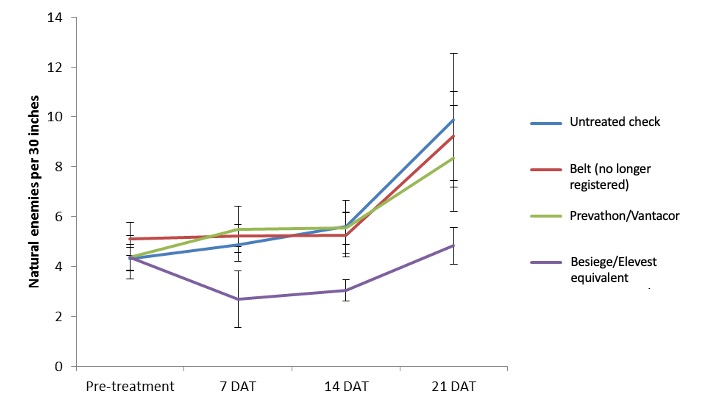The Impact of Insecticides on Soybean at Flowering on Beneficial Insects
go.ncsu.edu/readext?873741
en Español / em Português
El inglés es el idioma de control de esta página. En la medida en que haya algún conflicto entre la traducción al inglés y la traducción, el inglés prevalece.
Al hacer clic en el enlace de traducción se activa un servicio de traducción gratuito para convertir la página al español. Al igual que con cualquier traducción por Internet, la conversión no es sensible al contexto y puede que no traduzca el texto en su significado original. NC State Extension no garantiza la exactitud del texto traducido. Por favor, tenga en cuenta que algunas aplicaciones y/o servicios pueden no funcionar como se espera cuando se traducen.
Português
Inglês é o idioma de controle desta página. Na medida que haja algum conflito entre o texto original em Inglês e a tradução, o Inglês prevalece.
Ao clicar no link de tradução, um serviço gratuito de tradução será ativado para converter a página para o Português. Como em qualquer tradução pela internet, a conversão não é sensivel ao contexto e pode não ocorrer a tradução para o significado orginal. O serviço de Extensão da Carolina do Norte (NC State Extension) não garante a exatidão do texto traduzido. Por favor, observe que algumas funções ou serviços podem não funcionar como esperado após a tradução.
English
English is the controlling language of this page. To the extent there is any conflict between the English text and the translation, English controls.
Clicking on the translation link activates a free translation service to convert the page to Spanish. As with any Internet translation, the conversion is not context-sensitive and may not translate the text to its original meaning. NC State Extension does not guarantee the accuracy of the translated text. Please note that some applications and/or services may not function as expected when translated.
Collapse ▲It is important not to use insecticides in soybeans before thresholds are reached (including at bloom for corn earworm or stink bug). All effective insecticides for stink bugs will negatively impact natural enemies. We need to scout these pests and treat only when thresholds are reached.
Click on this link to understand why we should not treat corn earworm during bloom and covers the reasons why I encourage growers to use Prevathon/Vantacor and Besiege/Elevest in cotton, but not in soybean. We also have a new insecticide (Denim) that is very effective for earworms and loopers this year in addition to Blackhawk, Intrepid Edge, or Steward.
My research counterpart Anders Huseth recently posted an article on the impact of plant bug and bollworm insecticides on beneficial insects in cotton. We have similar information for soybean from work done in both Virginia and North Carolina. Beneficial insects are important in the system because they act as bio-residual to hold back potential pests that might flare up later in the season. Therefore it is important that we keep them around as much as possible. This article demonstrates the potential danger of throwing an insecticide in the tank before pests reach threshold.
In the Virginia and North Carolina experiment, we tested two “worm specific” insecticides (the equivalent of Prevathon/Vantacor) against a check and a “worm + stink bug” insecticide (the equivalent of Besiege/Elevest) in six fields. The graph below provides an example of the kind of effects we saw.
Because the Besiege/Elevest insecticide had a pyrethroid included with the worm-specific insecticide, we decreased natural enemies far past the time-point of our spray. This reduced our bio-residual and opened us up to other pests similar to results of the trial highlighted in this post. In that trial, wherever we applied a pyrethroid we flared looper populations compared to where we did not.



